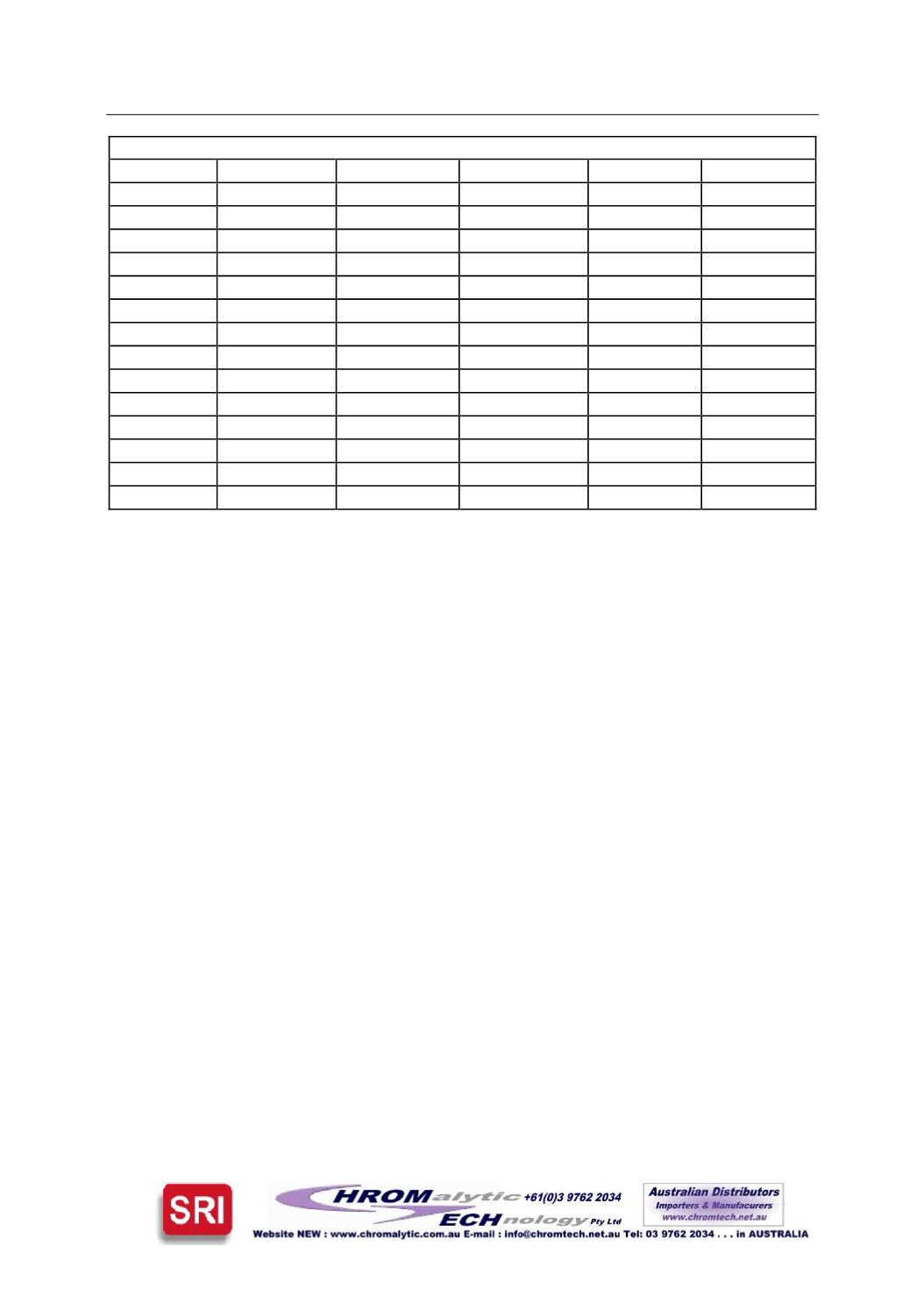
StationaryPhases
49
Equivalent chain-lengthsof themethyl ester derivatives of some fatty acids
31
20:2(n-9)
19.51
20.38
20.58
20.92
32
20:2(n-6)
19.64
20.56
20.78
21.12
33
20:3(n-9)
19.24
20.66
20.92
21.43
34
20:3(n-6)
19.43
20.78
21.05
21.61
35
20:3(n-3)
19.71
20.95
21.22
21.97
36
20:4(n-6)
19.23
20.96
21.19
21.94
37
20:4(n-3)
19.47
21.37
21.64
22.45
38
20:5(n-3)
19.27
21.55
21.80
22.80
39
22:1(n-11)
21.61
22.04
22.16
22.30
40
22:1(n-9)
21.66
22.11
22.23
22.36
42
22:3(n-6)
21.40
22.71
22.99
23.47
43
22:4(n-6)
21.14
22.90
23.21
23.90
44
22:5(n-6)
20.99
23.15
23.35
24.19
45
22:5(n-3)
21.18
23.50
23.92
24.75
46
22:6(n-3)
21.04
23.74
24.07
25.07
*Thisdocument ispart of thebook "
GasChromatography andLipids
" byWilliamW. Christie and
published in1989byP.J. Barnes&Associates (TheOilyPressLtd),who retain the copyright
Table 10. Equivalent chain-lengths of themethyl esterderivatives of somenatural fatty
acids*
15. Conclusions
1.
Gas chromatography is an old and still current analytical method used in research and
applied fields.
2.
Separation of components in the sample is based on the difference of partition
(adsorption or absorption) between amobile phase in continuousmotion, a permanent
gas and a fixed phase called stationary phase, solid powder (separation by adsorption)
or non-volatile liquid for separationby absorption.
3.
Stationary phase is deposited in chromatography column, which is the heart of the gas
chromatography apparatus.
4.
Chromatography columns can be made of different materials: stainless steels, copper
alloy, nickel, aluminium, plastics, glass, silica etc.
5.
Chromatography columns can be packed, micro-packed, capillary, with differences in
diameter, length, thickness of the packed-bed and, ultimately, with different column
performance.
6.
The materials most used for columns are glasses and silica, especially for capillary
columns.
7.
Using capillary columns have led to a considerable enlargement of the column length,
shortening analysis time, increasing separation performance, the finding of stationary
phases with improved performances both in terms of separability as well temperature
resistance.
8.
Efforts have increased to find the best stationary phase, allowing a good separation of
geometric and optical isomers, for example polysiloxanes, and mixtures of different
types andproportionswith improved thermal resistance.


